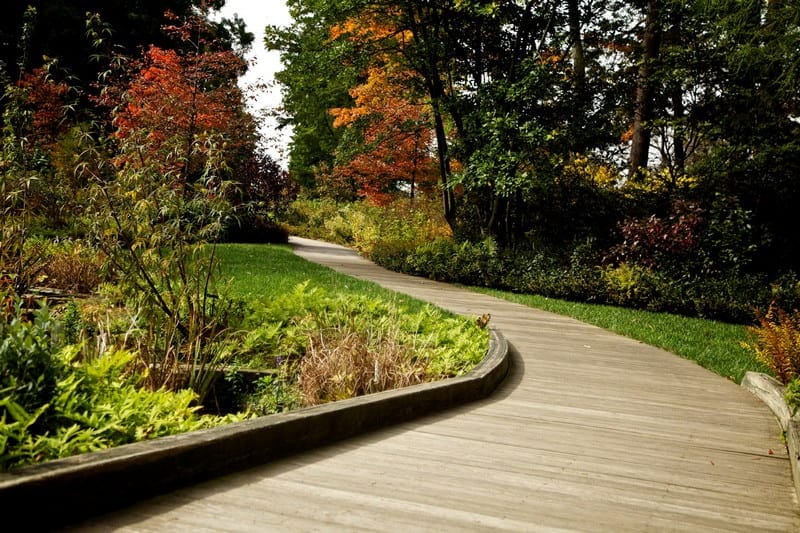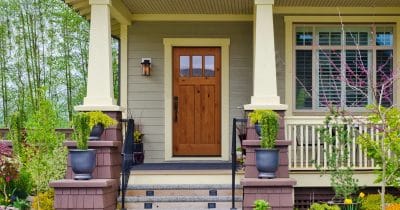
Converting your yard into a beautiful landscape can rapidly shift from aspiration to disaster when typical errors sabotage your venture. Countless property owners dedicate substantial time and resources only to encounter dying vegetation, damaged hardscaping, and design disappointments during the initial years. Identifying these four crucial oversights before construction determines whether you achieve a flourishing outdoor retreat or a costly letdown.
Choosing Different Materials
Choosing different materials affects your outdoor space’s aesthetic unity and ongoing upkeep. The temptation to use multiple appealing material choices creates cluttered, fragmented designs, which lose the refined harmony characteristic of expert installations. Every extra material variety adds complications, care demands, and opportunities for problems.
Effective landscapes usually employ two or three harmonious materials that establish visual continuity across the area. Coordinating stone pavers with corresponding retaining wall units and feature rocks generates unity, whereas combining concrete pavers, natural stone pathways, brick edging, and ornamental stone creates visual disorder. This same concept extends to plant choices, where restricting your selection to compatible varieties produces greater impact than random individual plantings.
Not Paying Enough Attention to the Soil
Soil preparation decides whether your outdoor space will thrive or falter. Soil analysis delivers essential data influencing design choices such as species selection, placement decisions, and necessary site modifications. These include amendments like compost, lime, or nutrients. However, numerous property owners bypass soil analysis completely, installing costly plants in environments where they cannot feasibly prosper.
Quality soil maintains the appropriate mix of minerals, organic content, and water movement properties suited to your selected vegetation. Dense soil resulting from building work, inadequate water flow, or improper acidity levels can destroy even the most thoughtfully chosen plants. A professional landscape design guide can offer assistance in transforming your property to create ideal growth conditions, yet this basic step continues to be overlooked by do-it-yourself gardeners.
Not Planning Your Space
Property owners who embark on landscaping projects without an overarching strategy will make decisions in isolation. They could put in an attractive deck only to discover it interrupts the seamless transition between their kitchen and yard. Or they may plant a magnificent oak that grows to overshadow their neighbor’s land, leading to shading conflicts and costly tree removal.
Inadequate spatial design reveals itself in multiple forms. Certain homeowners approach projects by thinking about standalone features instead of viewing how components function together as a unified whole. They concentrate on positioning a grill in one spot or playground equipment in another without grasping how individuals will navigate and utilize the complete area. This disjointed method results in uncomfortable unused spaces, narrow walkways, and exterior zones that seem isolated from the house’s interior.
Compromising Design to Fit the Budget
Financial limitations are a common challenge for property owners, but making compromises in critical areas frequently results in costlier issues later. The urge to select less expensive materials, omit proper ground preparation, or install smaller plants for immediate savings usually proves counterproductive. Inferior hardscape components deteriorate quickly, necessitating full replacement instead of routine upkeep.
A more strategic method involves implementing your landscape design in stages across several years while preserving overall cohesion. Begin with fundamental components such as adequate drainage systems and soil conditioning, then gradually incorporate vegetation and additional features. This approach enables investment in superior materials and plants with lasting durability. This delivers greater long-term value than inexpensive options that demand frequent replacement.
Endnote
Avoiding these four essential errors demands patience, investigation, and, frequently, expert consultation throughout the planning stage. Although the upfront expenditure on appropriate planning and high-quality materials may appear considerable, the long-term cost reductions in replacement expenses, maintenance duration, and aggravation render this strategy much more cost-effective.








